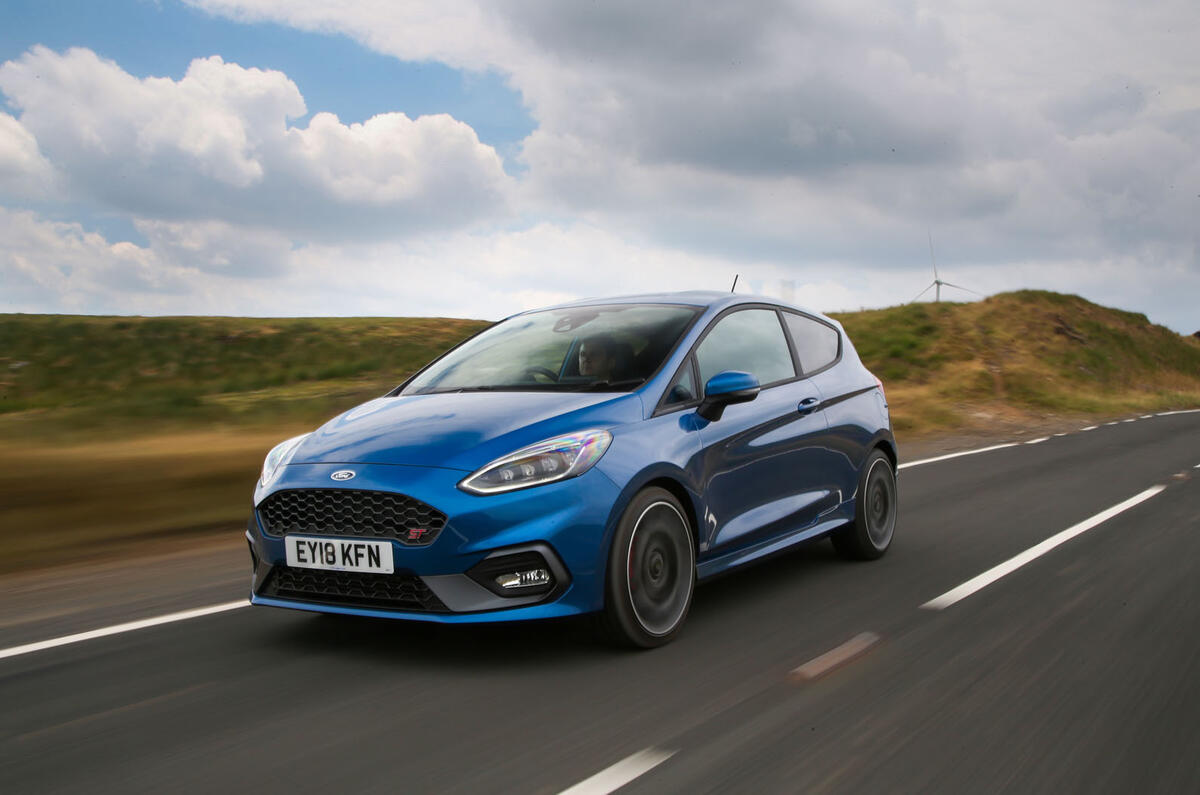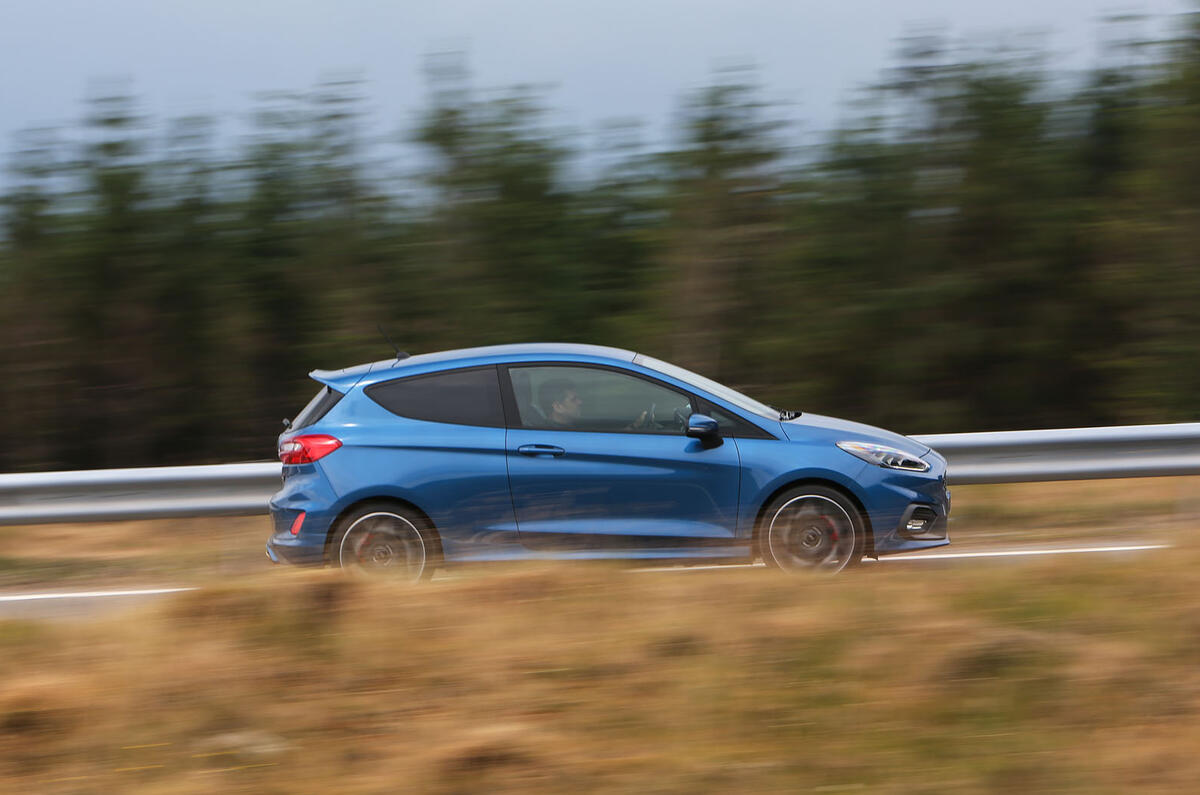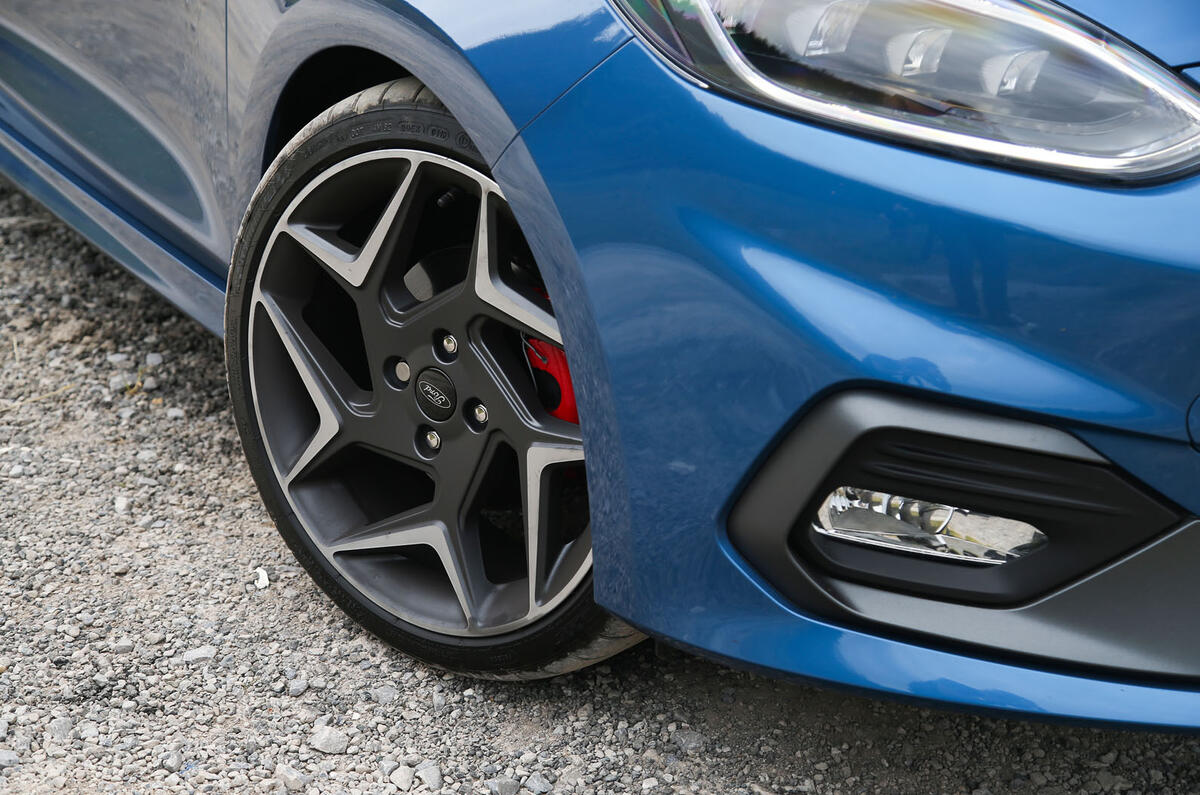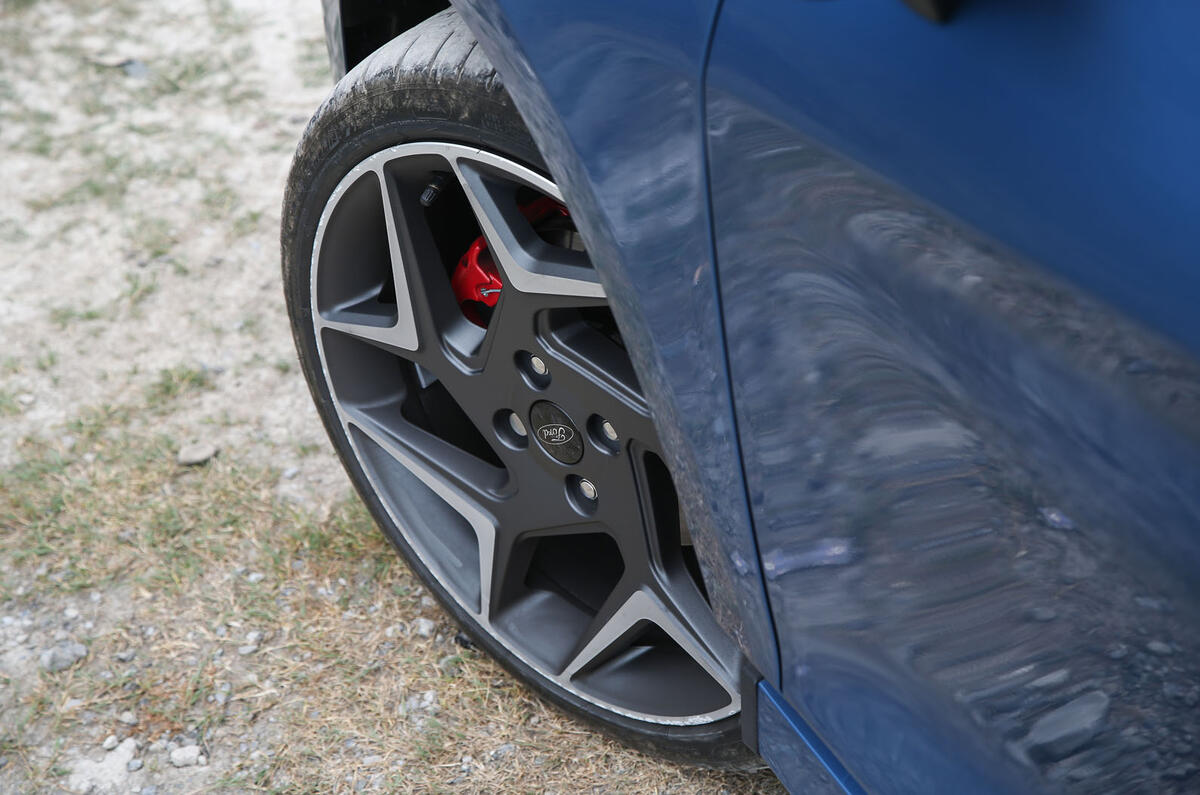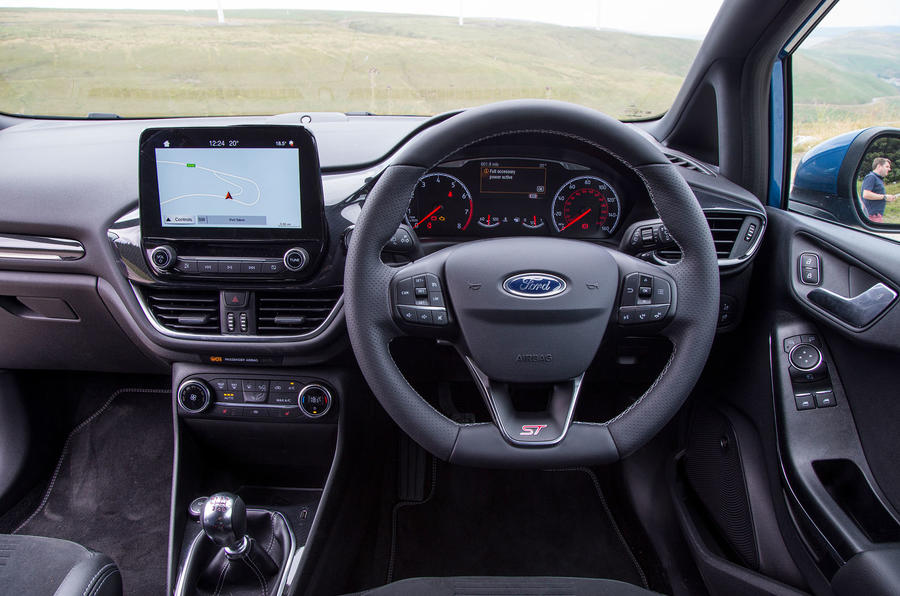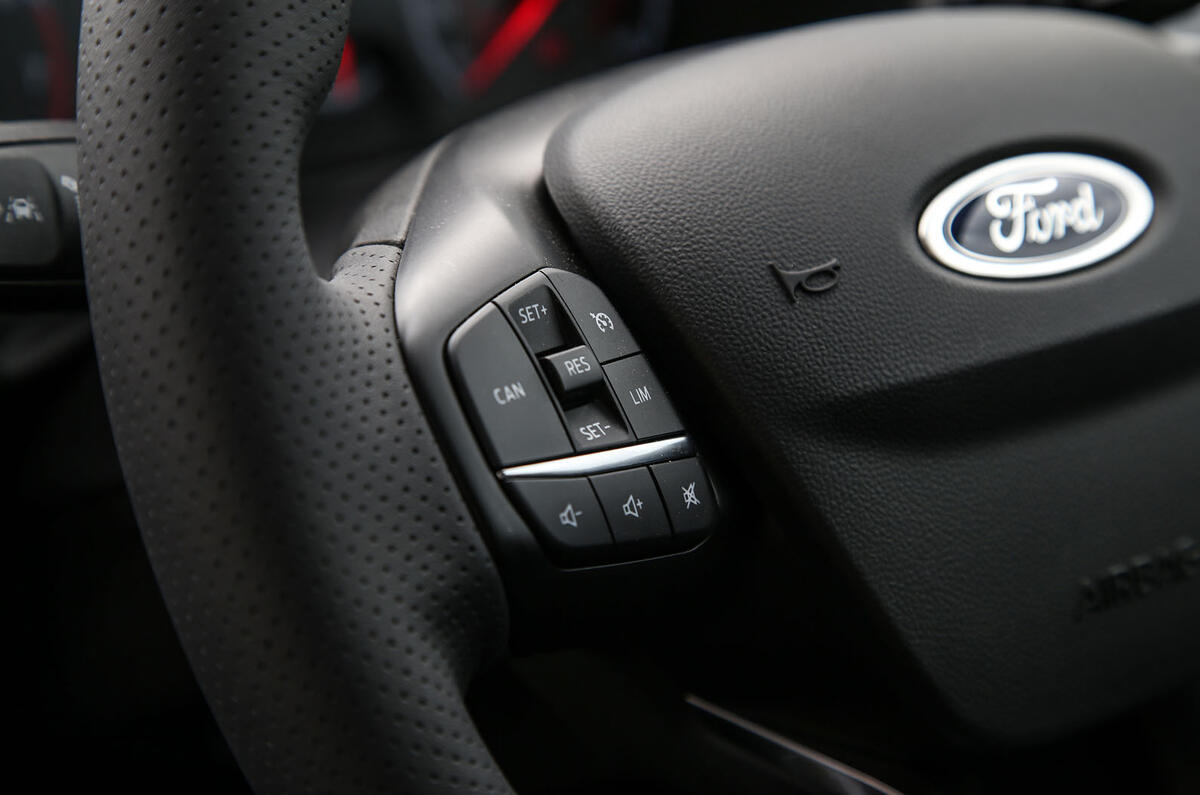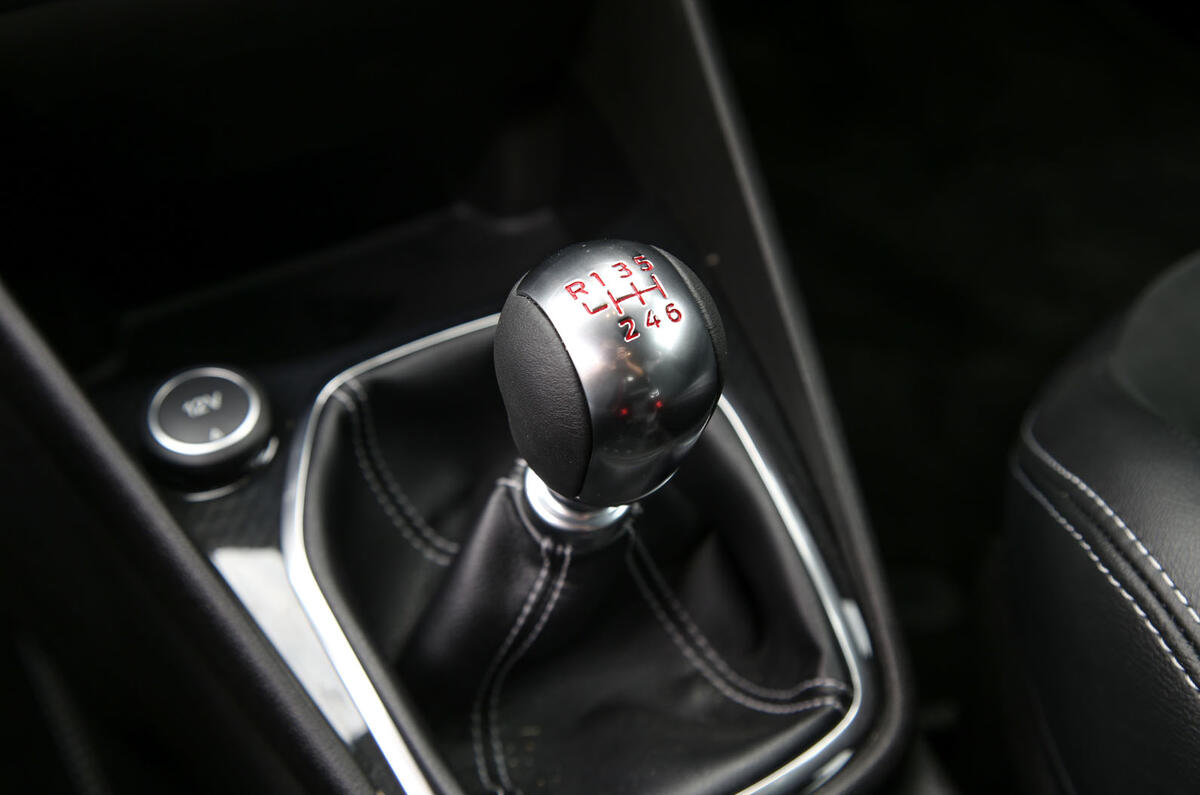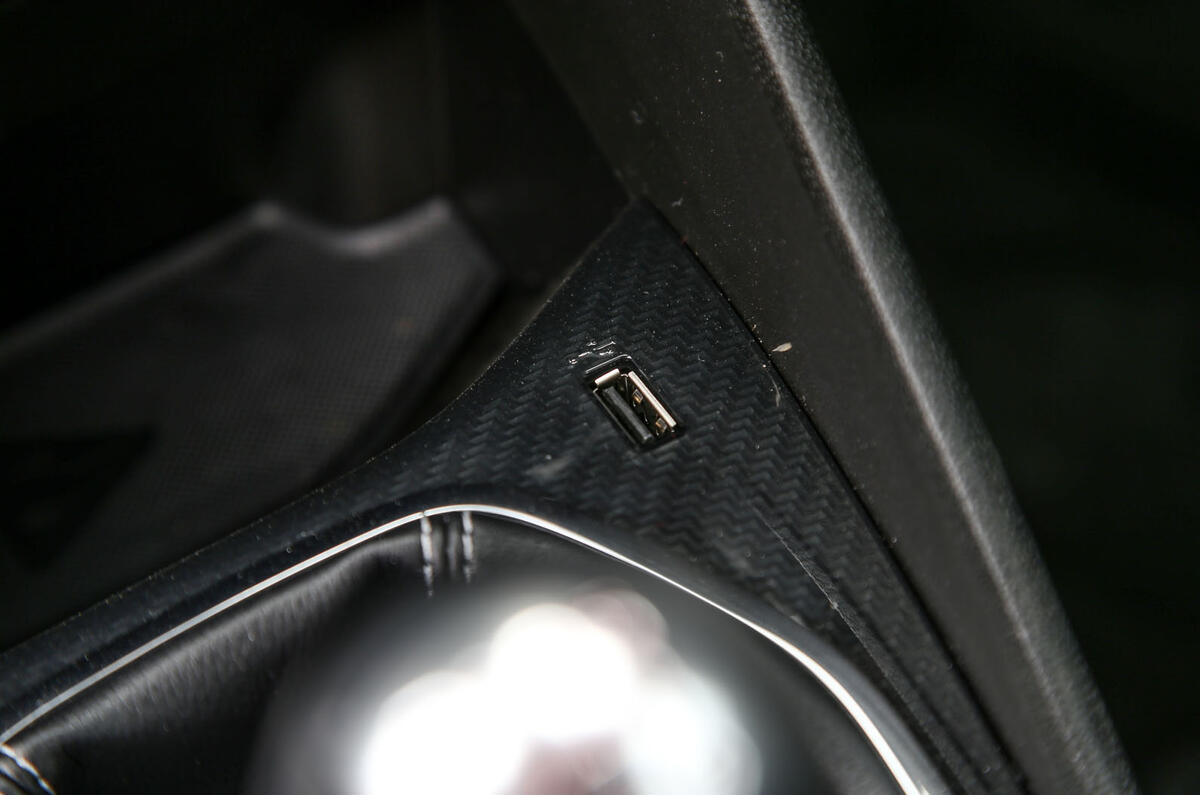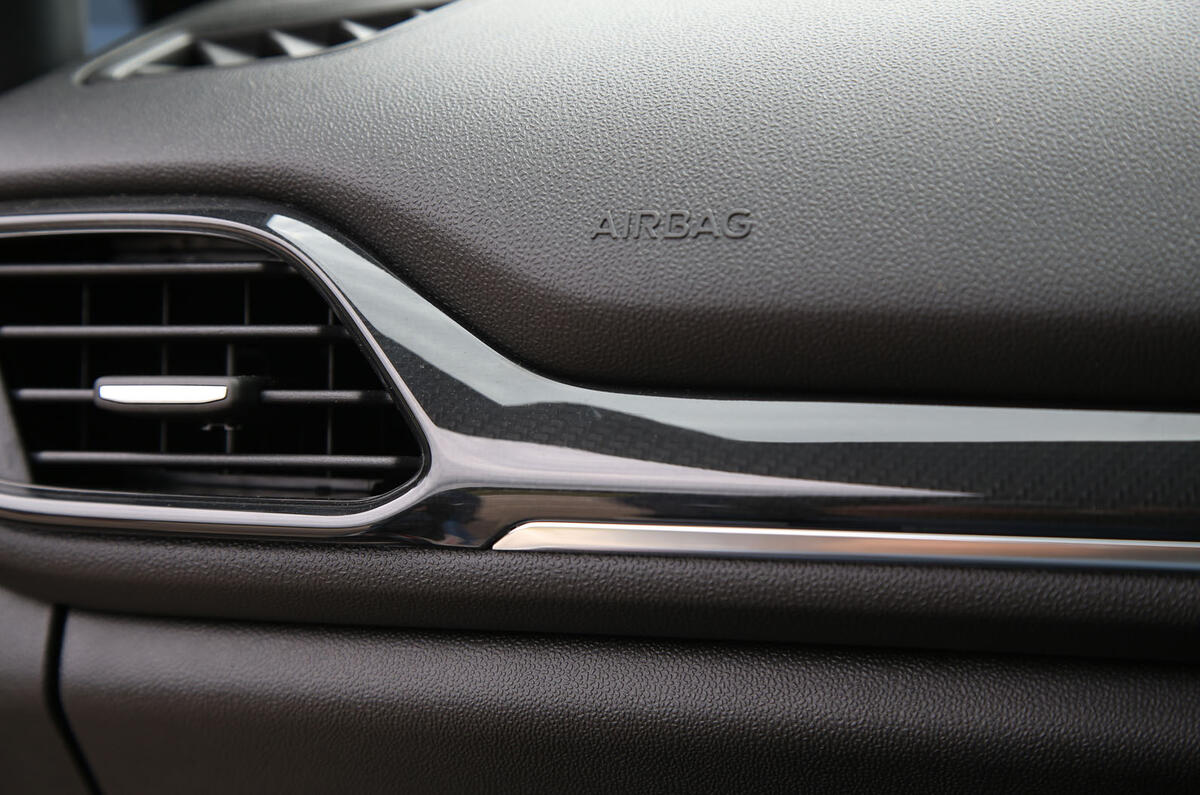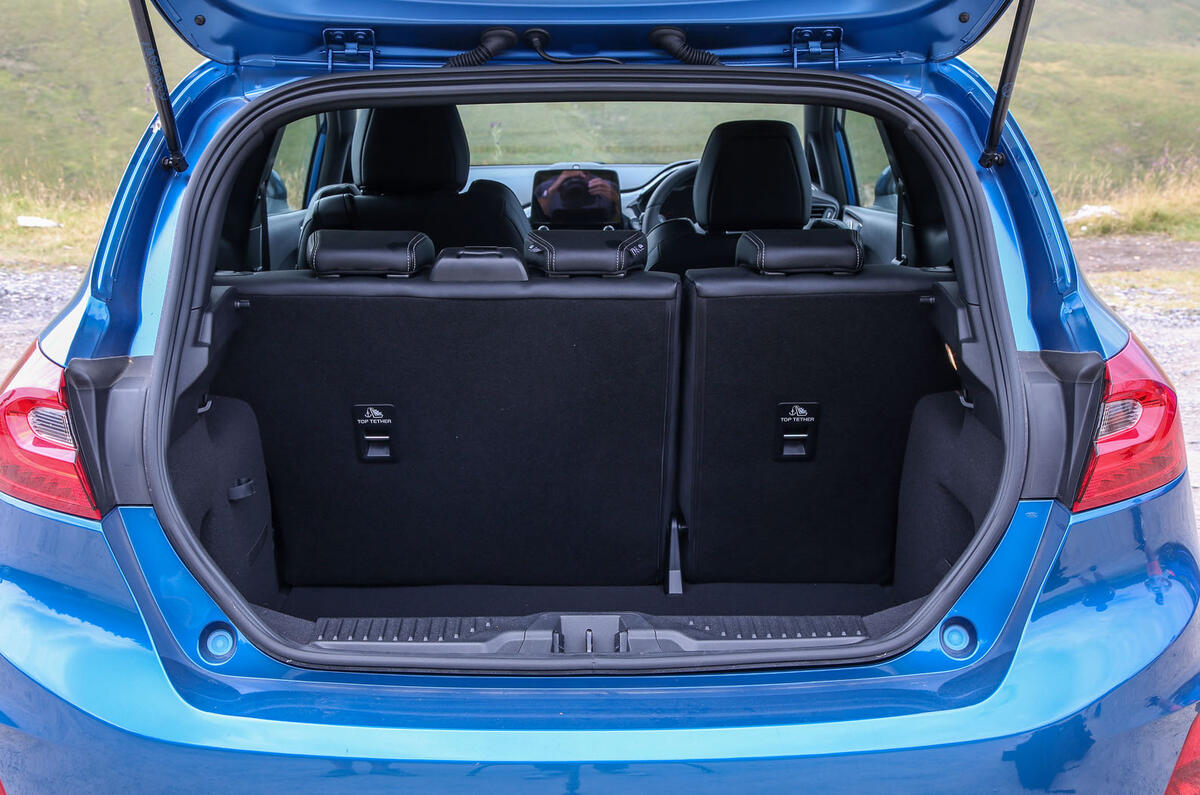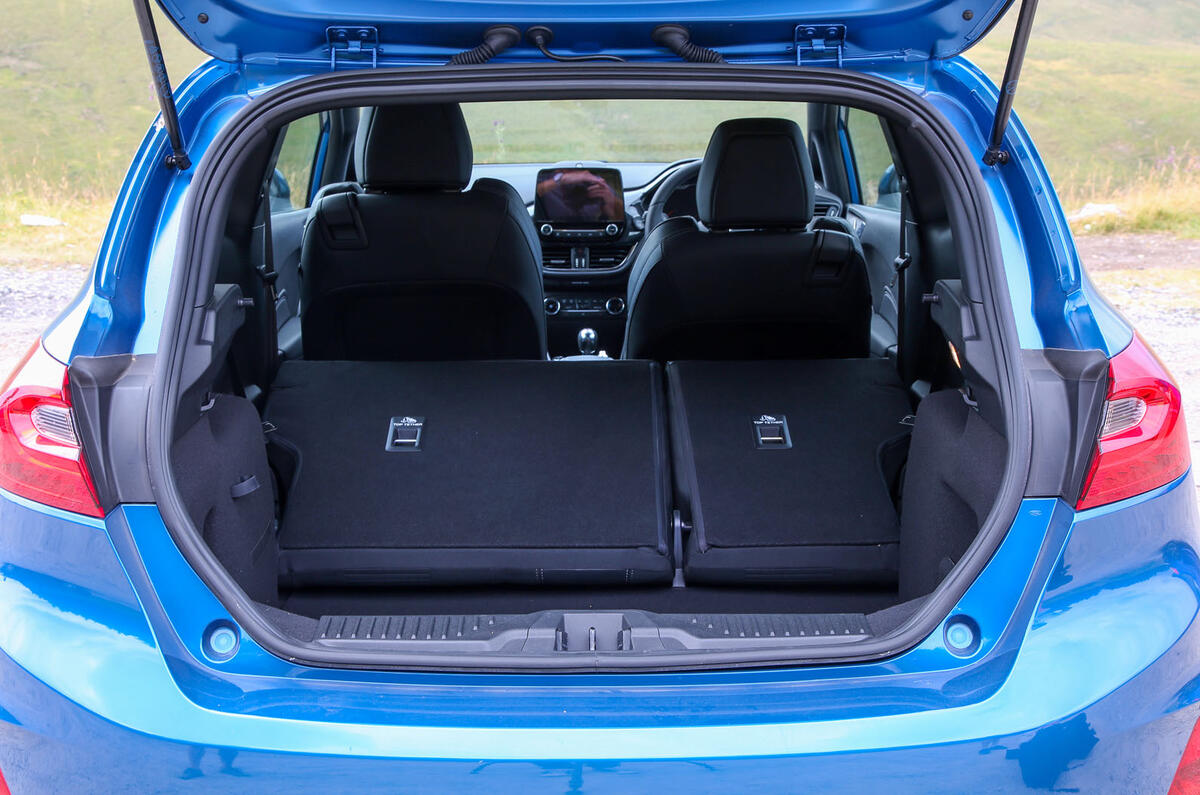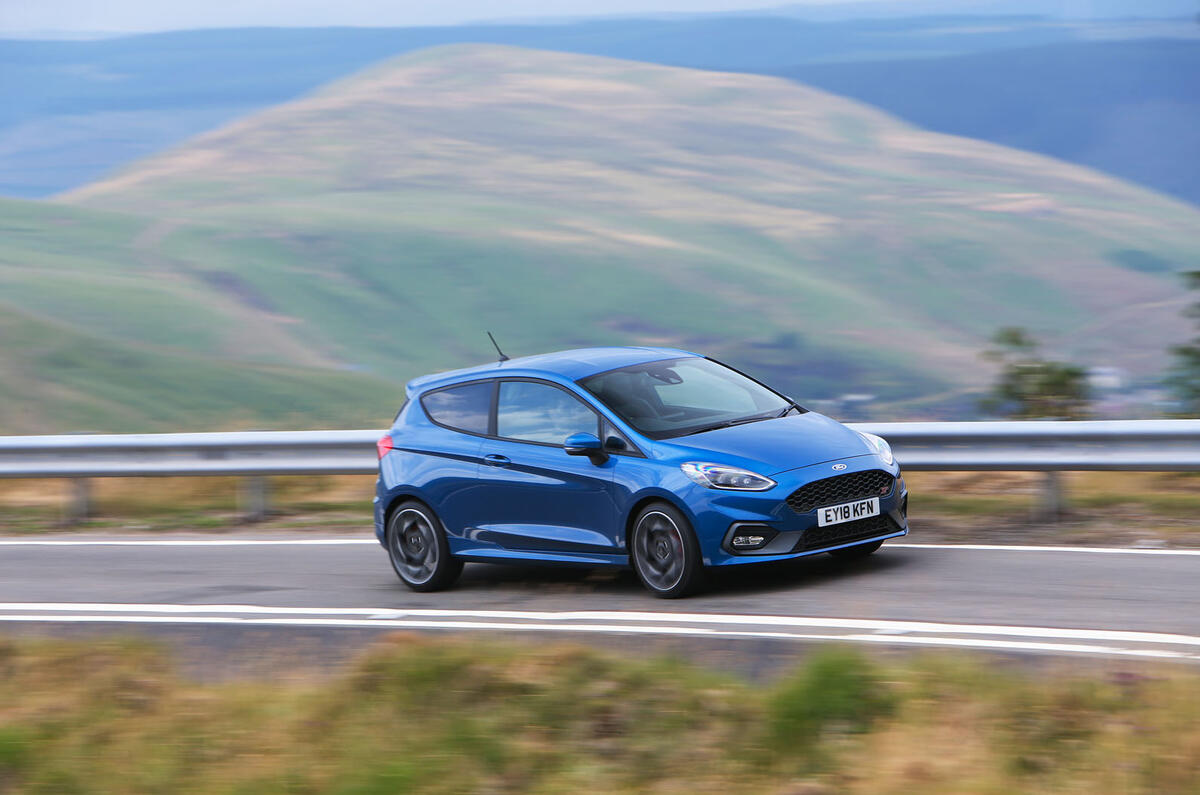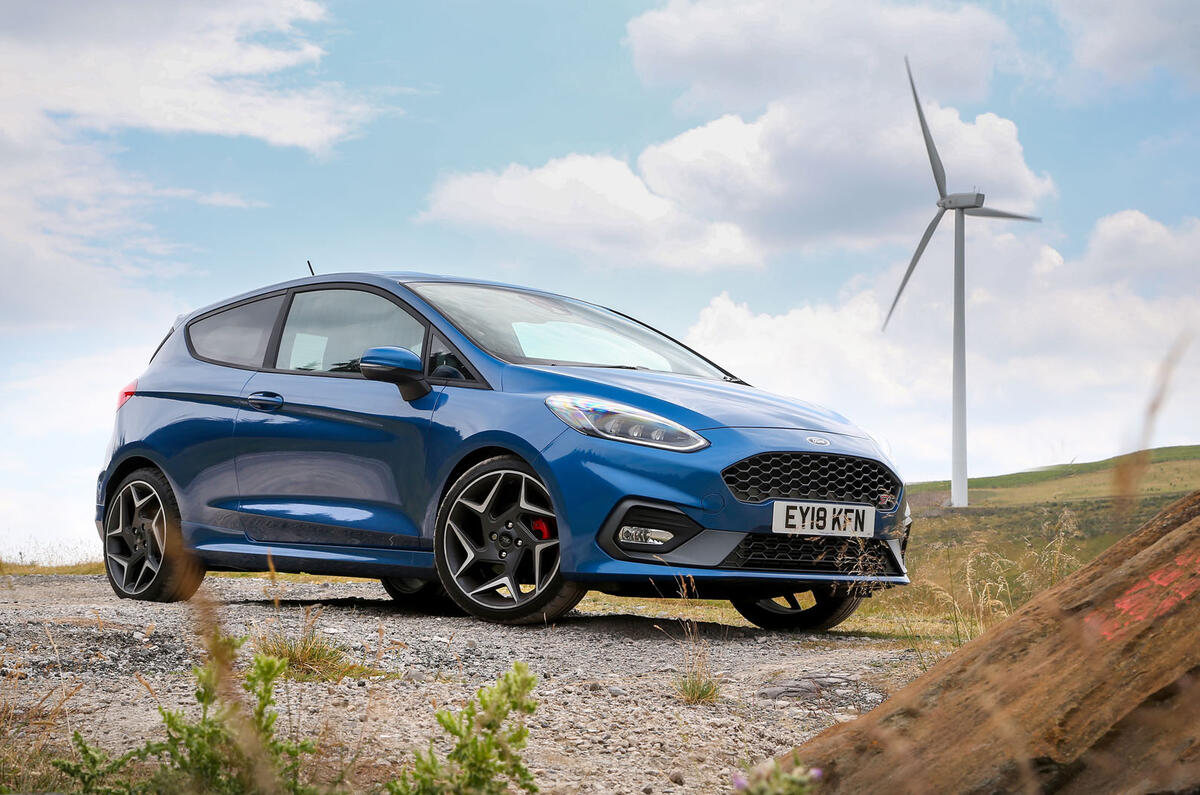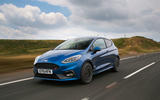Your initial reaction to the stuttering, syrupy three-cylinder thrum made by the Ford Fiesta ST when you listen to its engine spin freely to midway through the rev range might be ambivalence or even concern.
We’ve become so used to soundtracks not unlike this from economy-minded budget models, and that makes the uneven idle and fizzing, saccharine mid-range of a modern turbocharged three-pot strangely hard to accept when it’s coming from a hot hatch. But give it the benefit of the doubt and the Fiesta ST’s engine doesn’t take long to repay your faith.
This is an eyebrow-raisingly fast car, and certainly feels a good deal quicker, through the middle of the rev range particularly, than the previous ST. The electronic launch control works well enough but, by restricting the car’s engine power, doesn’t make for the quickest possible standing start. Without using it, however, it’s hard to gauge how much torque you can deploy without overwhelming the front tyres even in bone-dry conditions.
You certainly can’t use full throttle in total confidence until you hit third gear – an indication of just how much grunt the car’s engine is ready throw at its front tyres. After plenty of attempts, we recorded a best two-way average of 6.6sec from rest to 60mph: very respectable indeed, albeit nothing remarkable.


